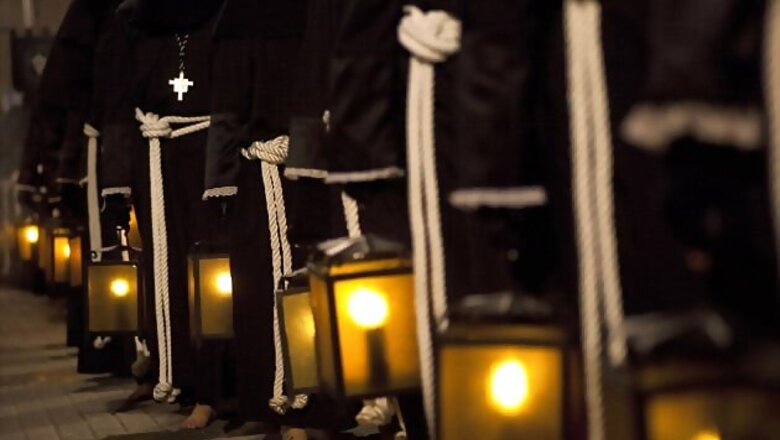
views
Srinagar: Tired of being found naked in his sleep every time soldiers searched his house during operations at the peak of militancy, Gulam Mohammad Mir, a farmer with no formal education, struck an idea to escape his tribulations.
Mir, habitual to sleeping without clothes, developed a 'singing lantern', powered by a dry battery, fitted with a remote sensor that will alert him to human movement near his house in Sagaam village in Kokernag area of Anantnag district and give him enough time to dress up.
The 48-year-old farmer, who recently participated at the innovators' meet at University of Kashmir, claims that the "singing lantern" has saved his life many times.
Over the last 20 years, many Kashmiri men have been killed during nights when they ventured out of their homes without lanterns and walked into army ambushes. Many were beaten, simply, for not carrying the lantern.
Mir knew the new ground rules well and was still beaten many times when the lantern's oil would not last the journey or when the winds would blow out the lantern's flame.
It was when the idea stuck him of having a battery-powered lantern and after several visits to the market for raw material, he began assembling his battery-fitted lantern ready.
Mir could have used a torch instead? "Torches were banned, soldiers could have mistaken a person with a torch as a militant. Traditional lantern would mean you are a civilian," he said.
While spending his nights out in the field, irrigating them and guarding them, Mir felt that boredom needs to be done with. Soon he included the option of having a radio in the lantern and he would spend nights listening to Bollywood songs.
"The basic and only reason that I innovated this lantern is the fighting that was going around. Militancy was widespread and there was huge pressure from Army," he said.
One night, Mir was sleeping inside his house when soldiers barged in. Mir, habitual to sleeping without clothes, was found by soldiers without clothes and beaten again, he said.
This led to another modification in the lantern - he included a motion sensor with a range of 15 feet, enough time to alert him.
"When the soldiers came next time, I was alerted by an alarm and I already had my clothes on when they came," he said.
Has his lantern saved him from beatings? "Yes," he said.
"When soldiers would stop me, they would be surprised by seeing a different lantern, and then I would show them the radio in it. They would enjoy a song and let me go," Mir said.
Today, Mir, with his humble farming background, is a proud owner of a lantern and a workshop at his home where he manufactures them for others.
"I have so far sold 20 such lanterns. The one with full range of features costs Rs 2,800 rupees and another with lesser features costs Rs 1,600," he said.
How could Mir with no technical knowledge of electronics fix circuits and come up with such a complex design. "I do not know, it became my passion and it simply worked out," he said.
Shabir Ahmad, the technical officer at Grassroots innovation and Augmentation Network (GIAN) cell JK - which provided "incubation" and research help to Mir in the later stage, said this lantern will help the traditional lantern to live on, "though in a different format".
"Even today nearly, 80 per cent of Kashmir's population lives in villages, so this lantern has a wide market," Ahmad said.
Mir now dreams of having his own manufacturing unit, where his life-saver lantern - which went through a decade of modifications - would be mass produced and sold to become a part of the household in rural Kashmir. PTI AZH MIJ
SPC




















Comments
0 comment